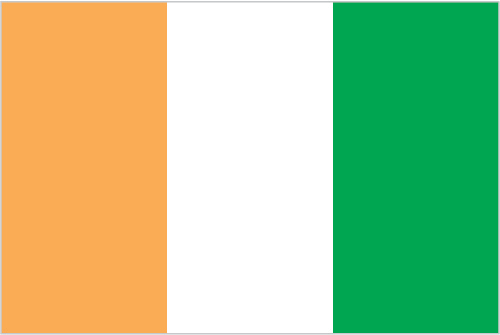
Cote d'Ivoire is heavily dependent on agriculture and related activities, which engage roughly two-thirds of the population. Cote d'Ivoire is the world's largest producer and exporter of cocoa beans and a significant producer and exporter of coffee and palm oil. Consequently, the economy is highly sensitive to fluctuations in international prices for these products and in climatic conditions. Cocoa, oil, and coffee are the country's top export revenue earners, but the country is also producing gold. The country also produces oil and boasted two offshore oil finds in 2012. Since the end of the civil war in 2003, political turmoil has continued to damage the economy, resulting in the loss of foreign investment and slow economic growth. In June 2012, the IMF and the World Bank announced $4.4 billion in debt relief for Cote d'Ivoire under the Highly Indebted Poor Countries Initiative. Cote d'Ivoire's long-term challenges include political instability and degrading infrastructure.
$43.67 billion (2013 est.)
country comparison to the world: 102
$40.43 billion (2012 est.)
$36.84 billion (2011 est.)
8% (2013 est.)
country comparison to the world: 12
9.8% (2012 est.)
-4.7% (2011 est.)
$1,800 (2013 est.)
country comparison to the world: 199
$1,700 (2012 est.)
$1,600 (2011 est.)
agriculture: 26.3%
industry: 21.3%
services: 52.4% (2013 est.)
42% (2006 est.)
2.9% (2013 est.)
country comparison to the world: 112
1.3% (2012 est.)
7.928 million (2013 est.)
country comparison to the world: 60
agriculture: 68%
industry and services: NA% (2007 est.)
NA%
foodstuffs, beverages; wood products, oil refining, gold mining, truck and bus assembly, textiles, fertilizer, building materials, electricity
7% (2013 est.)
country comparison to the world: 34